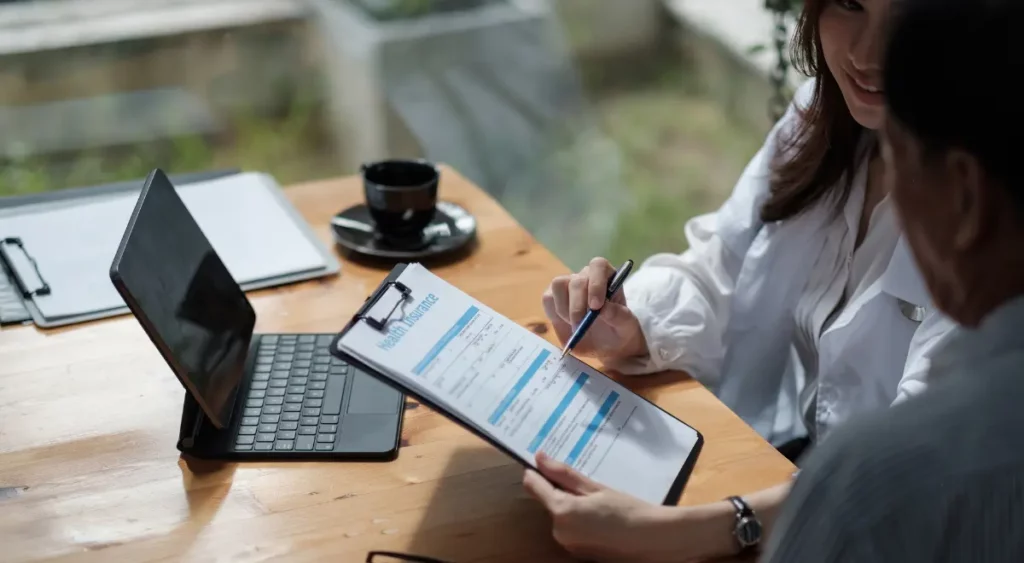Implementing Cost Savings Through Remote Patient Monitoring (RPM)

With the ever increasing sedentary lifestyle and environmental changes, many individuals are now complaining of getting tired easily, while some are dealing with chronic illnesses, like respiratory disorders. It is estimated that 50% of the US population has a chronic disease, and around 86% of the total healthcare costs is being spent taking care of them.
The challenge that’s coming up is how to make patients’ overall health and doctor appointments managed better, timely and cost-effective? Many healthcare organizations are now adopting the advanced virtual care models, like Remote Patient Monitoring (RPM) to deliver better care to patients with chronic ailments and illnesses. RPM connected devices continuously monitor patients’ vitals, right from their home.
Table of Contents
ToggleExpected ROI for RPM Services
Remote patient monitoring has greatly helped in reducing hospitalizations, emergency visits, and healthcare costs, along with saving money for both healthcare providers and patients. According to studies, remote patient monitoring can save money while also improving healthcare efficiency.
With an amazing success rate, healthcare providers consider RPM as a way to improve patient care and earn additional income in form of reimbursements. Understanding how RPM influences the Return on Investment (ROI) can help healthcare practitioners make better decisions and increase the effectiveness of their care management services. Some crucial elements that determine the ROI of an RPM service includes:
- Cost Analysis
In terms of an RPM program, cost analysis refers to the cost of adopting and maintaining a successful RPM program that covers the initial investment in technological infrastructure, monitoring devices, software integration, staff training, and technical support. Understanding the exact cost involved in a remote patient monitoring program is critical for calculating the return on investment accurately.
- Revenue Opportunities
Medicare and other commercial payers reimburse for remote monitoring services when CMS mandated monitoring requirements are met. To maximize the reimbursements for your healthcare organization, stay up-to-date with the latest reimbursement codes and billing regulations for RPM services. Consider the number of eligible patients who can be enrolled in an RPM program, and calculate the additional revenue earned.
- Reduced Hospitalizations & Emergency Visits
One of the key advantages of RPM is the role it plays in ensuring fewer hospitalizations and emergency visits. Go through your healthcare practice’s previous data to estimate the number of hospitalizations or emergency visits within the target patient population. Calculate the costs involved and aim for possible savings with regular patient monitoring and early interventions.
- Improved Resource Utilization
RPM can improve resource utilization by estimating the time and effort spent on a patient. With the elimination of in-person visits for routine monitoring and follow-ups, healthcare providers can now get to spend more time on their critically ill patients, resulting in improved clinical efficiency. Calculate the time and resources saved on physician’s time, nursing staff utilization, and overall workflow optimization as an aspect of calculating RPM ROI.
- Patient Satisfaction & Retention
Analyze patient satisfaction, feedback, and retention rates in RPM programs. Patients who are happy and actively involved are more likely to be compliant and stick with their treatment regimens; and recommend your healthcare practice to others, resulting in higher revenue over time.
How to Reduce Healthcare Costs with RPM?
When it comes to keeping the healthcare expenses in control, longer hospital stays, readmissions, and high medical care costs can make it difficult for any healthcare provider to manage the expenses. Nowadays, RPM is playing a significant role in minimizing the costs for both patients and providers by:
- Reducing Readmissions
Hospital readmissions can be costly for everyone involved in the healthcare system, including patients and providers. As a result, limiting readmissions is critical not only for cost savings, but also for improving patient outcomes and quality of care.
RPM can help healthcare providers reduce hospital readmissions in the following ways:
- Identify and monitor patients at risk of readmission
- Provide eligible patients with comprehensive monitoring
- Encourage better patient education and training
- Optimize Care Delivery Staff
No matter, for how long you have been delivering care services, your staff must perform at their peak to ensure the best patient outcomes and care quality. However, nursing shortages and staff burnout can have a substantial impact on the patient experience, leading to prolonged hospital stays and costlier readmissions.
You can greatly minimize the stress on the nurses and staff by implementing care delivery models that rely on remote care solutions. RPM can enhance patient outcomes and help reduce total healthcare costs for both patients and clinicians by allowing for easier patient monitoring, fewer in-person visits, and lower admissions to the emergency department.
- Focus on the Continuum of Care
RPM can help patients with chronic diseases receive ongoing care by optimizing a healthcare professional’s time with them and enhancing communication. It can reduce the number of unnecessary hospital visits, give patients more control over their health, and significantly lower the likelihood of future hospitalization or readmissions owing to unrecognized symptoms. Some of the features that contribute to this are:
- Remote monitoring
- Virtual visits
- Symptom identification
- Medication Reminders
- Patient Education
- Leverage Reimbursements
You can do cost savings by keeping track of your RPM expenses and reimbursements using the appropriate CMS-approved CPT codes. Keeping track of the actual costs incurred at your practice can be difficult, especially if you’re new to it. Using dedicated remote monitoring software that supports billing compliance, you’ll be able to keep up with the latest reimbursement process and provide quality care to your patients at the same time.
- Provide Value-based Care
Value-based care is a proactive concept that strives to reduce healthcare costs (for both payers and providers) by emphasizing quality and patient outcomes. While some challenges remain in the way of implementing value-based care, RPM can eliminate the majority of these barriers, improving your facility’s ability to provide value-based care while also lowering operational expenses over time.
With the value-based care model on the rise, the adoption of RPM can help establish the model as an essential part of your facility or as a stepping point to begin your journey to value-based care.
- Managing Chronic Diseases with RPM
Chronic illnesses or long-term disorders, such as diabetes and heart disease, account for the vast majority of healthcare costs. These illnesses account for 86% of healthcare and its associated expenses. By ditching traditional care models and adopting remote patient monitoring, healthcare providers can do better cost savings. It works in the following ways:
- Reduced patient visits and physician travel
- More cost-effective methods of patient vital and data tracking
- Reduced medication interventions or emergency treatments
- Outsourcing to RPM to Reduce Billable Hours
Remote patient monitoring reduces the need to hire new staff and reduces the number of clinical personnel needed to fill gaps in the workflow. This is because several duties in the physician’s job description can be delegated to RPM staff, such as patient monitoring, data remediation, and ECG scoring/interpretation.
With a lower workflow burden, existing staff can easily cope with patient surges, with a large portion of activities delegated to RPM staff.
- Cost-efficient Ambulatory Patient Management
Remote patient monitoring also expands options for ambulatory patient management. Patients do not have to be treated in-house, allowing for a care model that frees up practice space while lowering on-site expenses associated with patient monitoring. There are cost-saving benefits for the patient as well. Out-of-pocket expenses naturally decrease as recovery time shortens, reducing the time spent in care.
Frequently Asked Questions (FAQs)
RPM lowers costs by keeping patients from having to go back to the hospital, cutting down on unnecessary ER visits, reducing patient travel, and allowing for earlier interventions that keep expensive complications from happening.
Medicare and commercial payer reimbursements, less time spent in the hospital, better use of staff resources, and happier patients all lead to higher ROI.
By monitoring patients daily, providers can identify warning signs early, modify treatment promptly, and prevent acute escalations that would otherwise necessitate hospitalization.
Yes. RPM takes care of routine monitoring so that nurses and doctors can focus on patients who are at high risk. This keeps people from getting burned out and makes the most of their time at work.
It helps providers keep track of results and step in early, which is in line with value-based care goals of lowering costs while improving patient health.
People with diabetes, high blood pressure, COPD, asthma, and heart disease benefit most from RPM by avoiding unnecessary complications.
Providers can use RPM CPT codes (99453, 99454, 99457, and 99458) to bill for setting up devices, monitoring them every month, and managing patients interactively.
Outsourcing device logistics, data monitoring, and patient engagement cuts down on overhead costs and provides clinical staff more time to do things that make money.
It lets patients be safely watched at home instead of using up expensive hospital or clinic resources, which saves health systems a lot of money.
Yes. As populations become older and the cost of chronic care goes up, RPM is becoming an important way to keep costs down while still providing outstanding care.
They weigh the costs of starting the program against the benefits of fewer hospitalizations, fewer ER visits, better medication adherence, and new ways to be paid.
Hidden costs could include buying devices, training staff, bringing on new patients, getting licenses for software, and making sure that the new system works with the old EHR systems.
As readmissions go down and billing for RPM codes goes up, most businesses start to see measurable financial benefits within 6 to 12 months.
Yes. Medicare pays for RPM services, and many private insurers now do too because it lowers their long-term costs for chronic conditions.
RPM makes patients more responsible for their health, which means they miss fewer treatments and stick to their plans better. This means fewer expensive complications.
Conclusion
Remote patient monitoring services can help hospitals save money in a variety of ways and we have discussed some of them in this blog. It can result in increased net revenue, which is also critical in improving the patient experience and the quality of care delivery services.
With HealthArc’s remote patient monitoring services, you can save money and increase the profitability of your healthcare organization. Our advanced care management platform helps practices in connecting to their patients in a remote setting, without compromising the healthcare delivery.
With our RPM software, optimize reimbursement and minimize documentation for increased clinical efficiency. Being HIPAA-compliant, we promise unmatched data security and privacy, along with adherence to reimbursement and billing policies.
To find out how our digital health platform can help with cost savings and higher reimbursements, schedule a free demo or give us a call at +201 885 5571.
Most Recent Blogs
Categories
Related Blog
- July 8, 2025 | Read Time: 9 mins
Remote Patient Monitoring (RPM) Pricing Structure and Models for Healthcare Providers
Remote Patient Monitoring (RPM) has emerged as an important part of value-based...
Learn More- March 4, 2025 | Read Time: 10 mins
Infrastructure Frameworks for Effective Remote Patient Monitoring (RPM)
Did you know that 74% of healthcare providers struggle with RPM implementation...
Learn More


